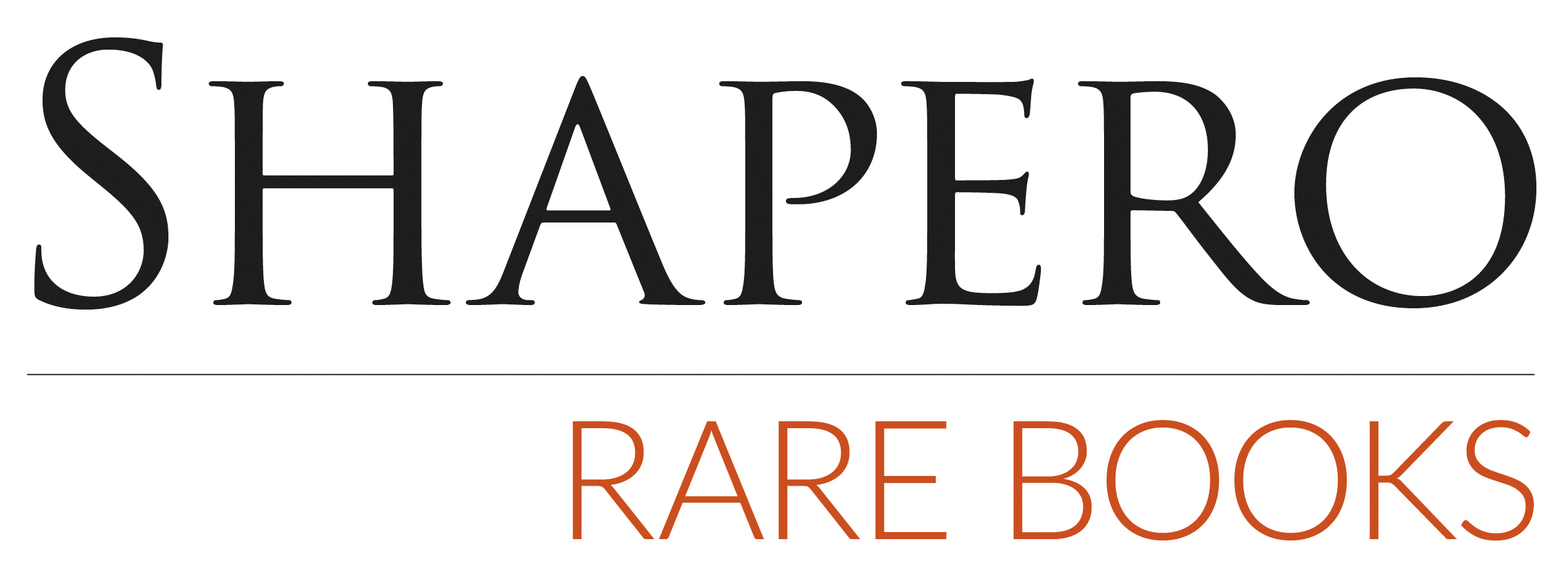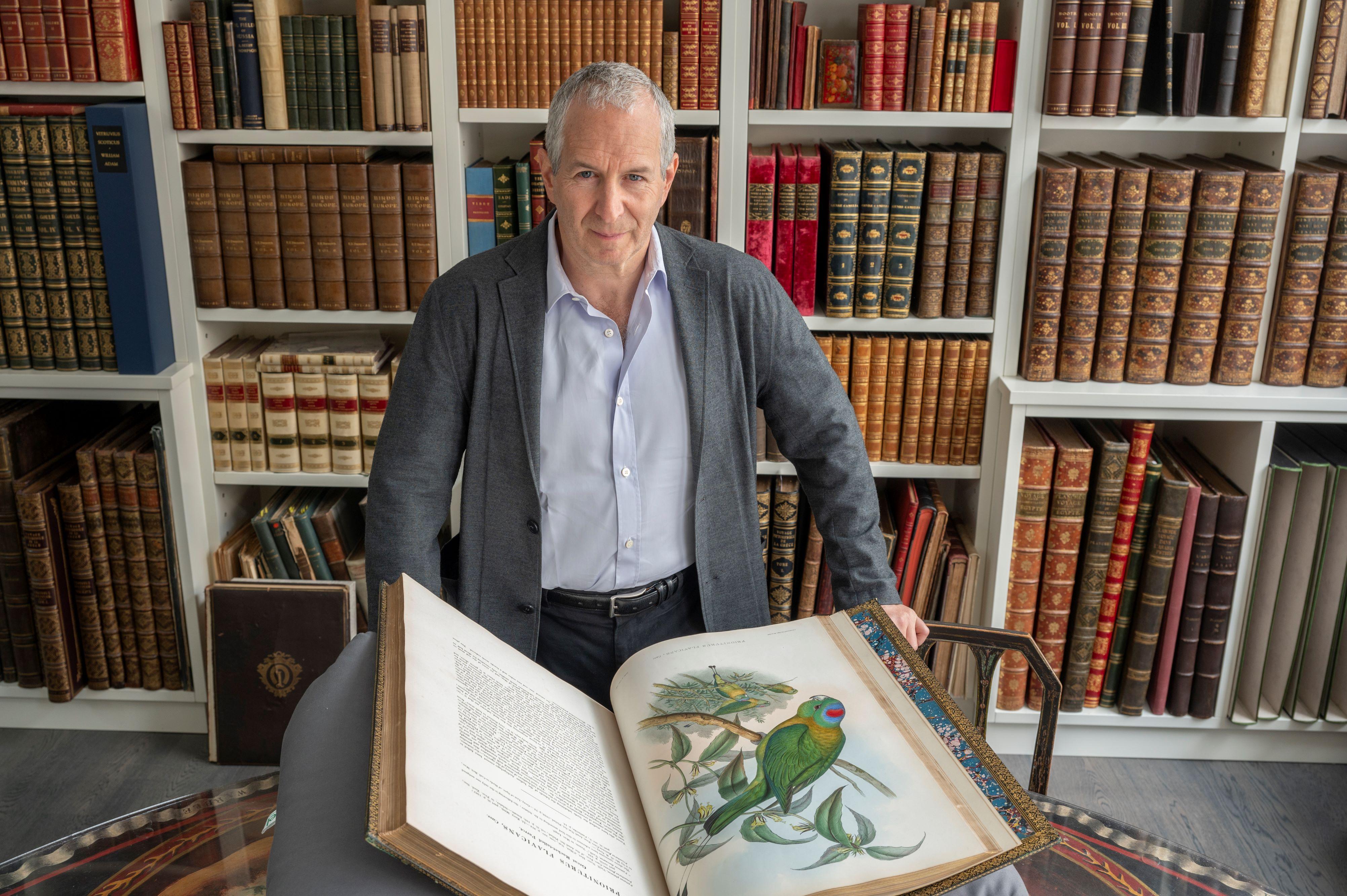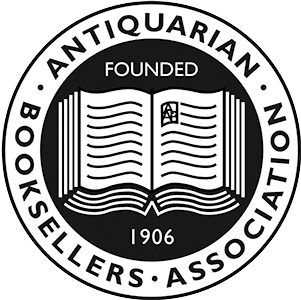[1933-1934]. . Original typescript with manuscript corrections; 4to (8 x 10 in; 25.5 x 20.5 cm); typescript titled on first page and upper cover of wrappers 'Wittgenstein Dictations'; 70ff, typed recto only, 2 lines of typographical ornament on title, 3 at end, consecutive typed-lines on f.33 inked in blue to form alternating arrows, 2-word MS correction in pen to f.69, '("The Blue Book")' added in blue to title; green wrappers with metal studs ('The Grip Binder'), typed 4-line note (on the reverse of a compliments slip of Prof. D.J. O'Connor), addressed to 'Brian' and signed in pen 'D', with a postscript 'I got it from a pupil of Anscombe.'; paper toned with occasional spots, wrappers slightly frayed at edges; [1](title), 1-69ff.
An extremely rare survival from Wittgenstein's lectures on 'Philosophy for Mathematicians' given at Cambridge between November 1933 and June 1934. Individual notes were circulated for each lecture but eventually the disparate sequence was distilled into an homogeneous form, dictated by Wittgenstein to his student Elizabeth Anscombe and prepared by her as a final, authoritative text. The result, long-known as the 'Blue Book', was eventually published by Blackwell in 1958. Prior to this, a very small number of duplicated copies were produced, of which the present example is the only one we know to have appeared on the market.
The title-page contains a 14-line typed explanation of the book's origin and purpose: 'These remarks, dealing largely with meaning and the "grammatical" tangles that are responsible for philosophical confusions, were dictated by Wittgenstein to four or five select pupils, in 1934. The pupils met with Wittgenstein twice a week sometimes oftener for discussions of from two to three hours' length. The first part of the meeting was devoted to questions asked by the students; following this Wittgenstein dictated, keeping close to the subject matter of the preceding questions, and endeavouring, as far as possible, to connect each dictation with the previous one. Some of the students then typewrote the dictations, and submitted them to Wittgenstein for correction. The dictations were mimeographed, for a limited circulation'.
With manuscript corrections inked in blue pen, and excellent provenance which can be traced back to the typescript's origin with Elizabeth Anscombe (1919-2001), Wittgenstein's amanuensis combining the role of student, friend, and translator. She served as one of his three literary executors in 1951, and went on to have a successful career at Cambridge where she was elected Professor of Philosophy in 1970.
The typewritten compliments slip reading: 'Brian, Is this of any interest? It is one of the copies of the original 'Blue Book' shorthand versions on which, I am told, a curse rests', with a manuscript postscript in blue ink: 'P.S. I got it from a pupil of Anscombe's. D'.
The author of the note was Professor Daniel O'Connor (1914-2012), head of the Philosophy Department at Exeter University in 1957. A student of A.J. Ayer and Karl Popper, he acquired the typescript from a pupil of Anscombe, and in turn gave it to his colleague Brian Carr, who wrote O'Connor's Guardian obituary in 2012.



![[The Blue Book]. Wittgenstein Dictations. (photo 1)](https://d3525k1ryd2155.cloudfront.net/h/327/587/1535587327.0.x.jpg)
![[The Blue Book]. Wittgenstein Dictations. (photo 2)](https://d3525k1ryd2155.cloudfront.net/h/327/587/1535587327.1.x.jpg)




